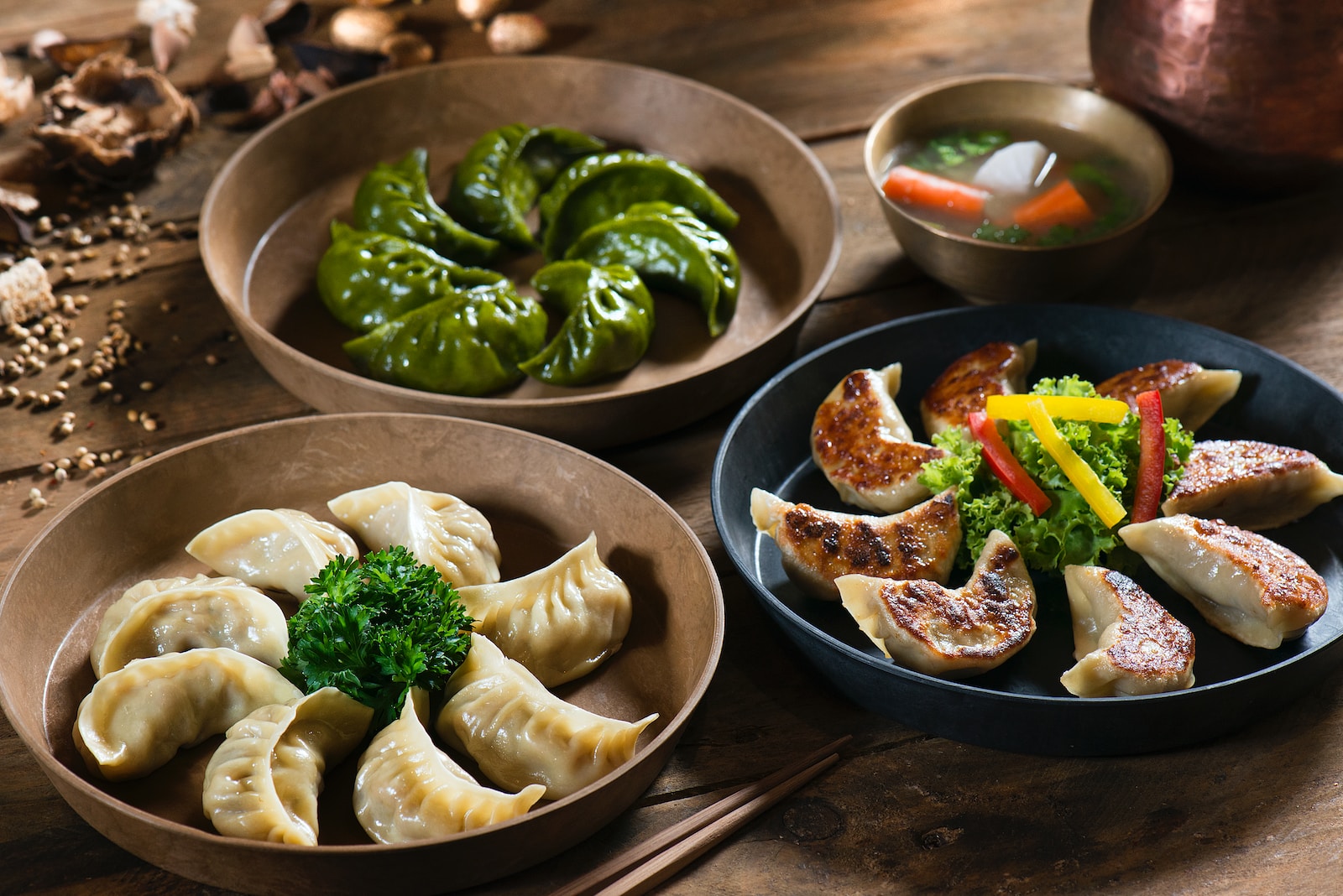CookingSubstitutes is a blog dedicated to exploring suitable alternatives in recipes, providing helpful how-to guides, and sharing mouthwatering recipes.
We're here to make your culinary adventures even more delightful!
Fried vs Steamed Dumplings: The Ultimate Showdown

Dumplings, a versatile comfort food, have captured the hearts and taste buds of food enthusiasts worldwide.
These delectable pockets of joy can be found in various cuisines, including Chinese, Japanese, Korean, Vietnamese, and more.
While there are countless dumpling variations, the main distinction lies in their cooking methods: fried and steamed. Let’s explore each method and its impact on the final product.
The Cooking Methods
Fried dumplings are prepared by cooking them in a pan with oil. This method results in a delightfully crispy exterior and a rich, nutty flavor.
On the other hand, steamed dumplings are cooked in a steamer, where they are placed in a basket over boiling water. This gentle cooking process yields dumplings with a softer, chewier texture.
Flavor and Texture
The choice between fried and steamed dumplings can significantly impact the overall flavor and texture of the dish. Fried dumplings offer a delightful crunch and a more pronounced flavor due to the caramelization that occurs during frying. The contrast between the crispy exterior and the tender filling creates a satisfying culinary experience.
In contrast, steamed dumplings have a softer texture, allowing the dough and fillings to meld harmoniously. The gentle steaming process helps the dumplings retain their moisture, resulting in a more delicate and chewy bite. The focus here is on the subtle flavors and the interplay between the filling and the dough.
Health Considerations
When it comes to health considerations, steamed dumplings generally have the upper hand. Steaming requires little to no oil, making it a healthier cooking method compared to frying. Steamed dumplings are lower in fat and calories, making them a great option for those who are health-conscious or watching their dietary intake.
On the other hand, fried dumplings, while undeniably delicious, can be higher in calories and fat due to the frying process. However, moderation is key, and enjoying fried dumplings in moderation can still be a delightful treat.
Cultural Significance
Dumplings hold significant cultural value in many Asian cuisines. They are often associated with family gatherings, festivals, and special occasions.
In Chinese cuisine, for example, dumplings symbolize wealth and prosperity, particularly during the Chinese New Year.
Steamed and fried dumplings are both enjoyed in these cultural celebrations, each representing different aspects of tradition and culinary heritage.
Serving Styles
Fried and steamed dumplings are typically served in different ways. Fried dumplings are often enjoyed as appetizers or snacks. They can be served with dipping sauces such as soy sauce, vinegar, or chili oil, enhancing their flavors and adding a tangy or spicy kick.
Steamed dumplings, on the other hand, are commonly served as part of a meal, accompanied by rice or noodles. They can be enjoyed with a light soy-based dipping sauce or even in a comforting bowl of soup.
Popular Types of Fried and Steamed Dumplings
Dumplings come in various shapes, sizes, and fillings. Some popular types of fried dumplings include potstickers, which have a crispy bottom and a soft top, and guo ties, which are pan-fried until golden brown.
Steamed dumplings encompass a wide range of options as well, including the classic Chinese jiaozi and Japanese gyoza. These dumplings often feature a combination of meat, vegetables, and aromatic seasonings, resulting in a delightful burst of flavors.
Tips for Making Delicious Dumplings at Home
If you’re feeling adventurous and want to try making dumplings at home, here are a few tips to ensure a successful culinary adventure:
- Prepare the dumpling dough from scratch or use premade wrappers available in stores.
- Experiment with different fillings, such as pork, chicken, beef, shrimp, or vegetarian options.
- Ensure a good balance of flavors by incorporating seasonings like soy sauce, ginger, garlic, and sesame oil.
- Take your time to fold the dumplings properly, ensuring a secure seal to prevent fillings from spilling out during cooking.
- Explore different cooking methods based on your preferences, whether it’s pan-frying, steaming, or boiling.
- Serve the dumplings with a variety of dipping sauces to enhance the overall taste experience.
FAQs
While dumplings are commonly associated with Asian cuisines, they can be found in various culinary traditions worldwide, with each culture adding its own unique twist.
Absolutely! Dumplings can be filled with a variety of ingredients, including vegetables, tofu, and other plant-based alternatives, making them suitable for vegetarian diets.
Yes, you can freeze dumplings. To do so, arrange the dumplings on a baking sheet and place them in the freezer until frozen. Once frozen, transfer them to a freezer-safe container or bag for storage. They can be cooked directly from frozen whenever you’re ready to enjoy them.
Yes, steam-frying is a cooking method that combines both steaming and frying. It involves frying the dumplings in a pan until the bottom becomes crispy and golden brown, then adding water to the pan and covering it with a lid to steam the dumplings until fully cooked.
Traditional dumpling wrappers are typically made from wheat flour, which contains gluten. However, there are gluten-free dumpling wrapper options available, made with alternative flours like rice flour or tapioca flour that can be enjoyed by individuals with gluten intolerance.
Conclusion
In conclusion, fried and steamed dumplings each offer a unique culinary experience. Fried dumplings tantalize with their crispy texture and intense flavors, while steamed dumplings delight with their soft and chewy texture. Whether you prefer the indulgence of fried dumplings or the healthier appeal of steamed dumplings, both options have their own merits. The choice ultimately comes down to personal preference and the desired dining experience.
So, the next time you’re craving dumplings, consider whether you’re in the mood for the satisfying crunch of fried dumplings or the comforting tenderness of steamed dumplings. Whichever you choose, you’re in for a delightful gastronomic adventure.



